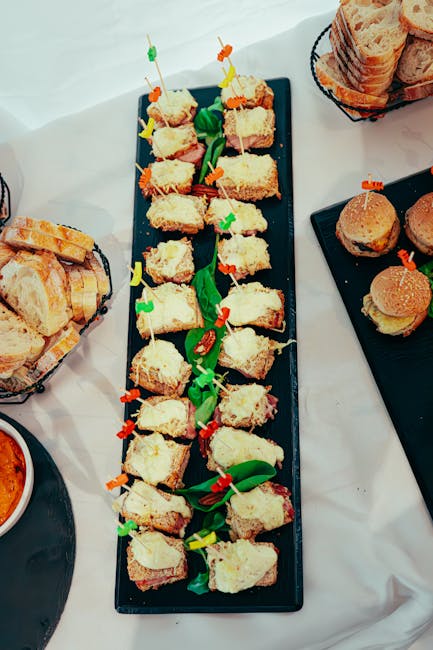Craving Philadelphia Cheesecake? Let’s Dive Into That Delicious Filling!
Philadelphia cheesecake is a classic for a reason! That rich, creamy filling is what makes it so irresistible. But what exactly is in a Philadelphia cheesecake filling? We’re here to break it down for you, so you can understand the magic behind this iconic dessert and maybe even try your hand at making one yourself. Get ready to explore the key ingredients and techniques that create the perfect cheesecake filling.
The Core Ingredients: Building Blocks of Creamy Goodness
Philadelphia Cream Cheese: The Star of the Show
It’s right there in the name! Philadelphia cream cheese is the foundation of this dessert. It’s what gives the cheesecake its signature tang and ultra-creamy texture. It’s important to use full-fat cream cheese and to bring it to room temperature before mixing. This ensures a smooth, lump-free batter. Low-fat or non-fat cream cheese will result in a different texture and flavor, so stick with the original for that authentic Philadelphia cheesecake experience. Think of it as the character actor that carries the whole production!
Sugar: Sweetness and Structure
Sugar isn’t just for sweetness; it also contributes to the cheesecake’s structure and moisture. Granulated sugar is typically used. The sugar works with the eggs to create a stable network that sets during baking, giving the cheesecake its characteristic firmness. The amount of sugar is crucial; too little and the cheesecake will be bland, too much and it might be overly sweet or even collapse during baking.
Eggs: Binding and Richness
Eggs are essential for binding the ingredients together and adding richness to the filling. They provide structure and help the cheesecake set properly. Use large eggs and incorporate them one at a time, mixing gently after each addition. Overmixing can incorporate too much air, which can cause the cheesecake to crack during baking. Think of eggs as the glue holding your masterpiece together.
Vanilla Extract: Flavor Enhancement
A touch of vanilla extract enhances the overall flavor of the cheesecake, adding a subtle warmth and complexity. Use pure vanilla extract for the best flavor; imitation vanilla extract can taste artificial. Don’t underestimate the power of vanilla – it elevates the cheesecake from simple to sublime.
Optional Additions: Sour Cream or Heavy Cream
Many Philadelphia cheesecake recipes include either sour cream or heavy cream. These ingredients add extra moisture and tanginess to the filling. Sour cream creates a slightly denser texture, while heavy cream results in a richer, smoother cheesecake. The choice is yours! Adding either one can make your cheesecake even more decadent.
The Process: Putting It All Together
Mixing Matters: Achieving a Smooth Batter
The key to a perfect cheesecake filling is proper mixing. Overmixing can incorporate too much air, leading to cracks during baking. Here’s the ideal process:
- Start by creaming the room-temperature cream cheese until smooth and fluffy.
- Gradually add the sugar, mixing until well combined.
- Incorporate the eggs one at a time, mixing gently after each addition.
- Stir in the vanilla extract and sour cream or heavy cream (if using).
- Mix until just combined; avoid overmixing.
Baking Techniques: Preventing Cracks
Baking a cheesecake can be tricky, but following these tips can help prevent cracks:
- Use a water bath: Place the cheesecake in a springform pan and wrap the bottom in foil. Place the pan in a larger pan and add hot water until it reaches about halfway up the sides of the springform pan. This creates a humid environment that helps the cheesecake bake evenly and prevents cracking.
- Bake at a low temperature: A lower oven temperature (around 325°F or 160°C) helps the cheesecake bake gently and evenly.
- Don’t open the oven door: Avoid opening the oven door during baking, as this can cause temperature fluctuations that can lead to cracking.
- Let it cool gradually: Once the cheesecake is done baking, turn off the oven and let it cool inside the oven with the door slightly ajar for an hour. This allows the cheesecake to cool gradually and prevents cracking. Then, refrigerate for several hours or overnight before serving.
Conclusion: Mastering the Art of Philadelphia Cheesecake Filling
The secret to a delicious Philadelphia cheesecake lies in the quality of the ingredients and the care taken during the mixing and baking process. By using full-fat Philadelphia cream cheese, incorporating the ingredients gently, and following the baking tips, you can create a creamy, decadent cheesecake that’s sure to impress. Now that you know what goes into the filling, you’re ready to bake your own masterpiece! Get in the kitchen and start creating that smooth, tangy delight!
